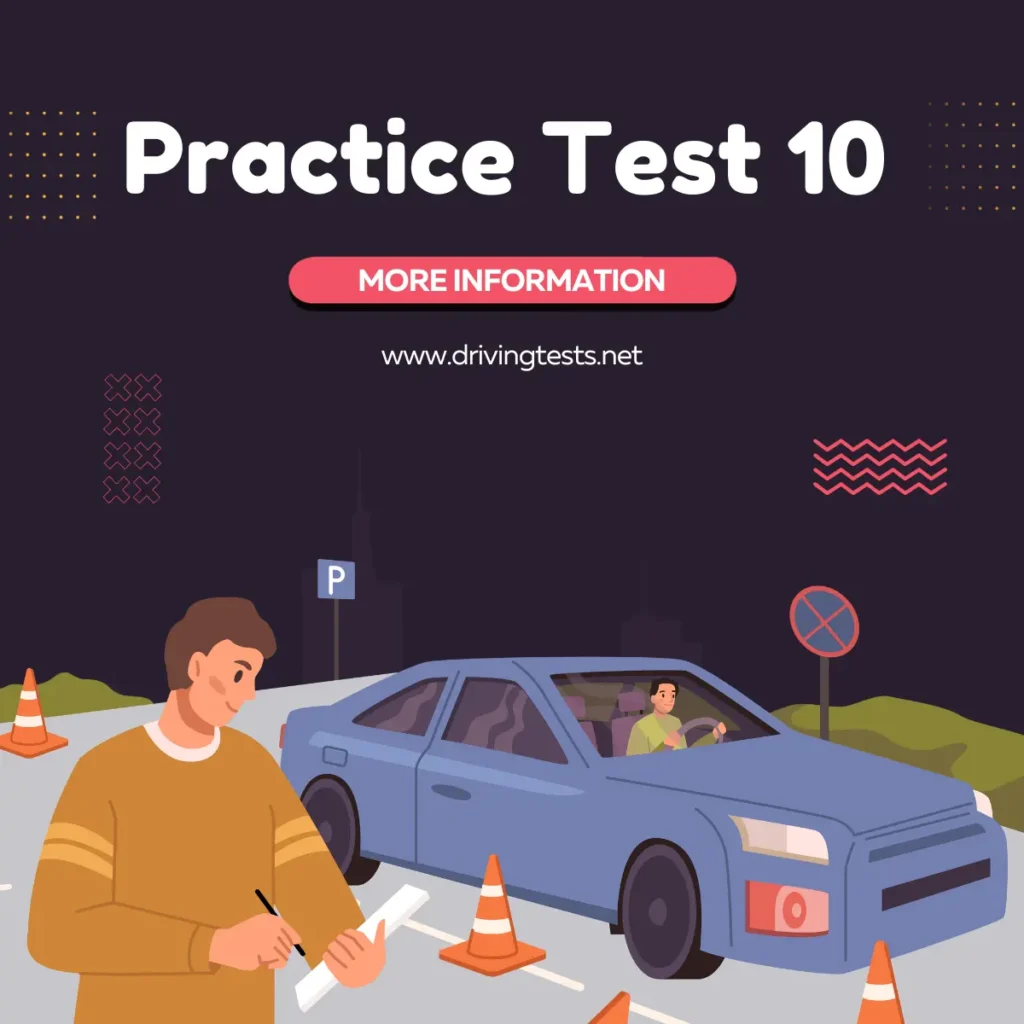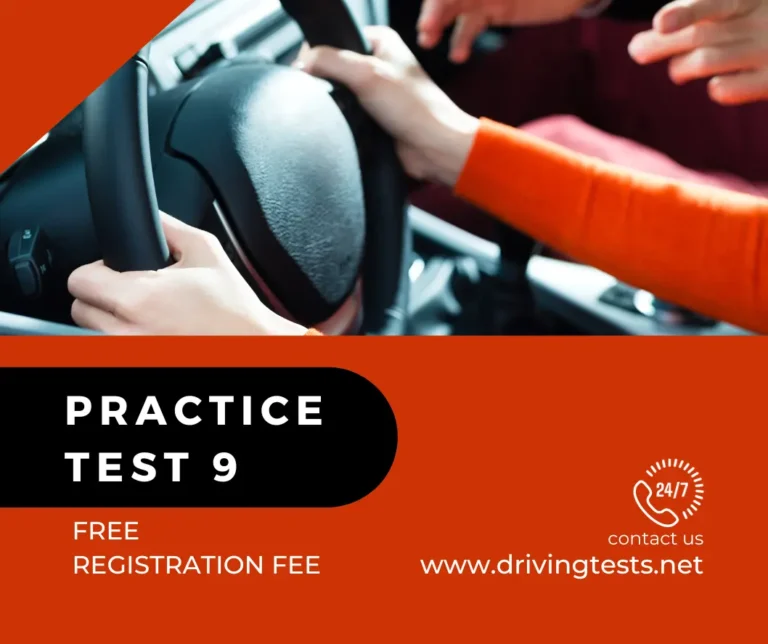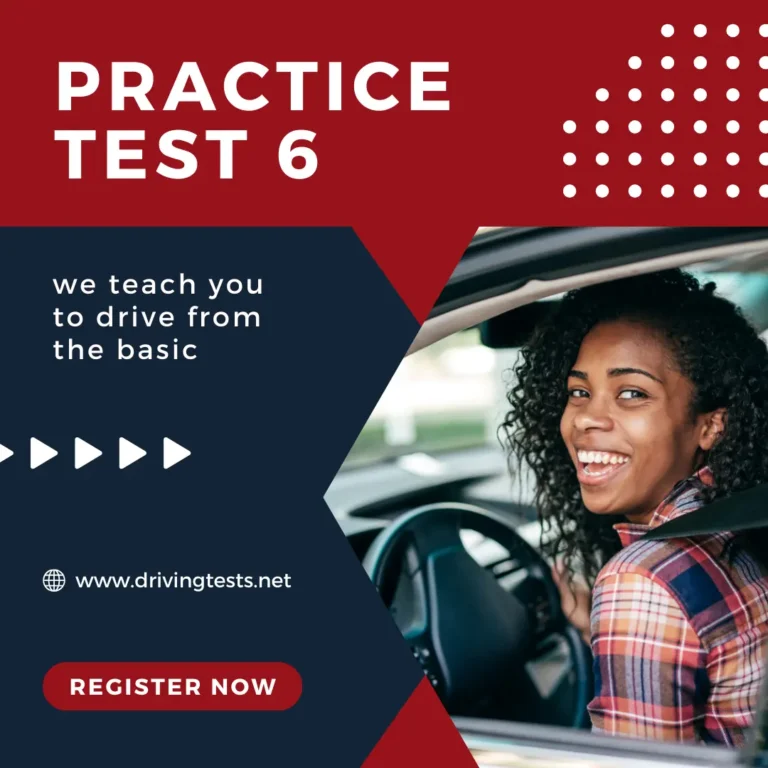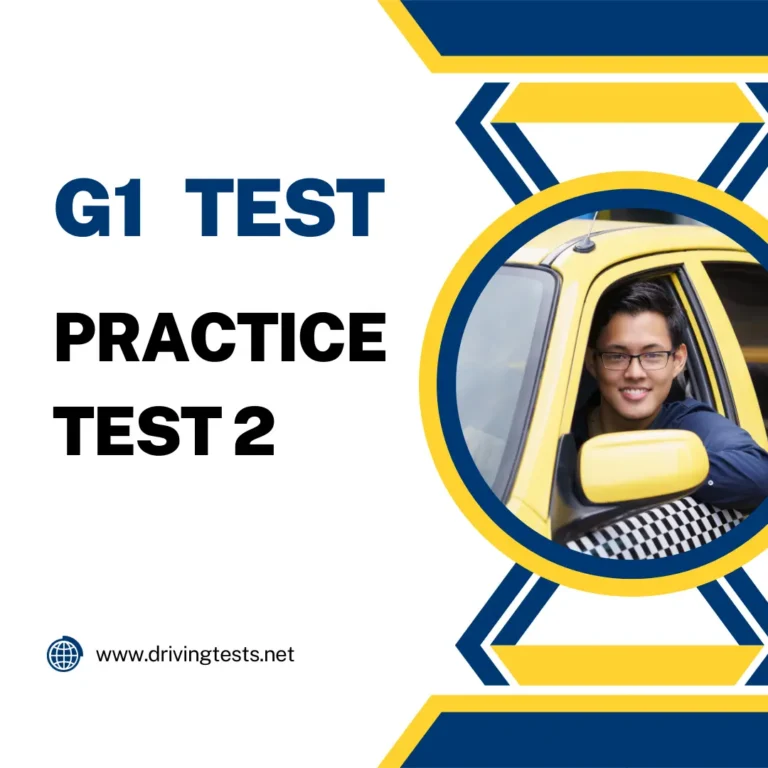Signs G1 Test Road Rules 10
The journey towards obtaining a license to drive in Ontario can be exciting, but also responsible. The G1 Test Road Rules, which is administered by MTO, assesses how well you understand the rules and signs of the road. This ensures that you can navigate safely. This comprehensive guide will take you through the complex world of road signs and rules. It covers the essential concepts for the G1 G1 Test Road Rules.
Understanding Road Signs: G1 Test Road Rules
- Visual Communications: The road signs convey important information about driving to the drivers. It is important to understand these road signs for safe, efficient, and effective navigation. G1 Test Road Rules places an emphasis on the ability to read and understand road signs. Road signs are important; drivers need to be able to communicate visually, and they must recognize road signs in order to pass the G1 test.
- Guidance on Regulatory Issues: The G1 Test Road Rules are a guide to the rules and regulations drivers should follow. Each sign carries specific instructions for driver safety. Road signs provide regulatory guidance, and road signs indicate rules and road regulations are followed for the G1 test.
- Cautionary and Warning Alerts: Other road signs are used to alert drivers about potential dangers or road changes. The signs alert drivers of upcoming hazards and encourage them to take the necessary safety precautions. Road signs warn of dangers, alerts to potential hazards, and adjust the speed according to road conditions.
- Directional and Informational Signs: Signs that provide directions or information on nearby services are used to direct drivers in a specific direction. It is important to understand these signs in order to plan routes and make informed driving decisions. Directional road signs and informational signs. Drivers can make informed decisions using signs.
Key Road Rules Stressed in the G1 Test Road Rules :
- Right-of-Way: For a safe, organized flow of traffic, it is essential to understand the right-of-way concept. G1 tests your understanding of the situations in which one driver must yield to another. For example, at an intersection or merging.
- Speed Limits : The speed limit is a key factor in road safety. G1 tests your understanding of the speed limit in different settings such as residential areas, schools zones and highways. It is important to know when you should adjust your speed in order to prevent accidents.
- Traffic Signs: The traffic signals such as pedestrian signals and traffic signals play an important role in the regulation of traffic. This test will assess your understanding of different phases and their meaning, as well as the actions that drivers are expected to take.
- Lane Discipline: For a traffic flow that is organized and efficient, it’s essential to maintain lane discipline. G1 Test Road Rules tests your knowledge of lane markings and how to use lanes properly for merging or turning.
Tested Common Road Signs on the G1 Test :
- Stop signs: The stop signs can be identified by their red colour and octagonal form. The driver must stop completely at the stop line or the intersection. G1 tests your ability to read and react appropriately to stop signs.
- Yield signs: The yield sign is triangular, with white letters and a border. When a driver encounters a yield signal, they must stop and slow down, or if needed, to let other drivers pass safely. This test will assess your knowledge of how to yield in various traffic situations..
- Speed Limit Signs: The speed limit sign indicates the maximum allowed speed on a specific road or section. This test will assess your understanding of speed limits and emphasize the need to adjust your speed in accordance with the posted limit.
- Signs for School Zones: Signs indicating a school zone warn motorists that they may enter an area where there are children. The speed limit must be reduced and drivers should exercise caution. This test will assess your knowledge of school zone responsibilities.
- Signs prohibiting parking: Signs that say “No Parking” indicate prohibited parking areas. It is important to understand these signs in order to avoid fines, and ensure the smooth flow. This test will assess your understanding of parking regulations.
Test Preparation Strategies:
- Interactive Learning: Use interactive methods to learn, like online quizzes or apps that simulate G1 tests. Active participation in these tools will reinforce your knowledge of road signs and rules.
- Visual Memorization Techniques: Use visual memory techniques to help you remember road sign shapes, symbols, and colors. Flashcards and visual aids will help you to quickly recognize signs on the G1 exam.
- Scenario-Based Practice: Use scenarios that combine road signs with rules. You will be better prepared for any complex situation you might encounter while driving.
- Regular Review Session: Regularly review signs and traffic rules to improve your knowledge. The material is retained better and you will feel more confident when taking the G1 exam.
- G1 Road Sign Recognition Test: Understand the colors, shapes and symbols on various road signs to pass the G1 exam. Learn to quickly identify and interpret road signs in order to pass the G1 test.
- G1 Test Road Rules Understanding: Focus on the right of way, speed limits and traffic signs to improve your understanding of the road rules. Understand the driving rules for safe, responsible, and ethical behavior.
- Practice Tests for G1 Signs and Rules: Online resources are available to help you practice G1 sign and rule test signs. Prepare for the G1 exam by engaging in scenario-based and interactive exercises.
- Scenario-Based Learning forG1 Test: Use scenario-based training for the G1 exam to learn how to deal with complex situations that involve road signs and regulations. Apply your knowledge to realistic situations in order to be prepared for road challenges.
- Flashcards for G1 Road Sign Test: Use flashcards to improve visual memory for the G1 test. To help you recognize the G1 test quickly and accurately, create flashcards that emphasize key shapes and signs.

Conclusion:
It is important to master road signs and rules in order to pass the G1 exam and become a responsible and safe driver. Understanding the importance of road signs and key road rules and preparing with a strategy will help you to confidently pass the G1 and establish the foundations for safe driving. The road to becoming an approved driver starts with understanding road signs and rules. This is the first step towards a confident and responsible driving future.






